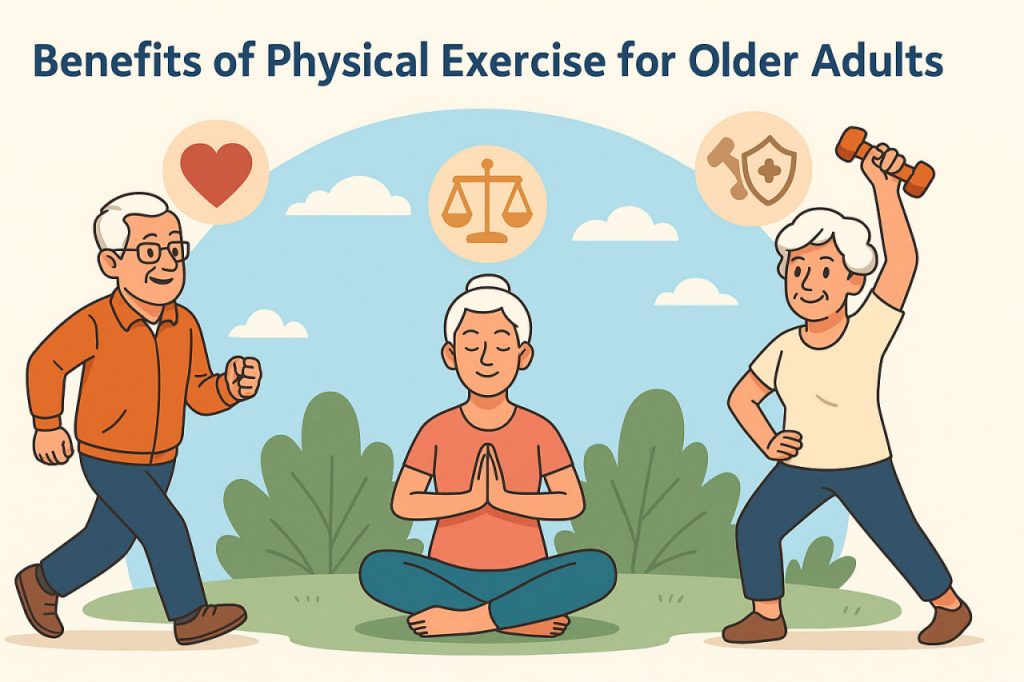Physical activity is important at every stage of life, but it becomes especially valuable in older age. For seniors, regular exercise is one of the best ways to maintain independence, prevent chronic diseases, and improve quality of life. Even moderate activities such as walking, stretching, or light strength training can have significant positive effects on the body and mind.
Improved Heart and Circulatory Health
Exercise strengthens the cardiovascular system, helping to lower blood pressure, improve circulation, and reduce the risk of heart disease and stroke. Activities such as brisk walking, swimming, or cycling keep the heart strong and improve oxygen delivery to tissues, which is essential for overall vitality.
Stronger Muscles and Bones
With age, muscles naturally weaken and bone density decreases, increasing the risk of falls and fractures. Regular strength exercises, even with light weights or resistance bands, help preserve muscle mass and bone strength. This reduces the likelihood of osteoporosis and supports better mobility and balance.
Better Balance and Flexibility
Falls are one of the most common health risks among older adults. Exercises such as tai chi, yoga, and balance training improve coordination and stability. Flexibility exercises keep joints mobile, making everyday activities—like climbing stairs or reaching for objects—easier and safer.
Metabolic and Immune Benefits
Exercise helps regulate metabolism, supporting healthy weight management and better blood sugar control, which lowers the risk of type 2 diabetes. Physical activity also boosts the immune system, making the body more resilient to infections and reducing inflammation.
Mental Health and Cognitive Function
Physical activity has powerful effects on the brain. It stimulates the release of endorphins, which improve mood and reduce stress. Exercise is linked to better memory, attention, and a lower risk of cognitive decline, including Alzheimer’s disease. For seniors, staying active helps maintain emotional stability and social connections, especially in group activities.
Quality of Life and Independence
Perhaps the greatest benefit of exercise for older adults is the preservation of independence. By staying physically active, seniors maintain the strength and energy needed to perform daily tasks, travel, and enjoy hobbies. This enhances confidence, reduces reliance on others, and improves overall life satisfaction.
Conclusion
For older adults, exercise is more than just physical activity—it is a powerful tool for maintaining health, independence, and happiness. By improving cardiovascular health, strengthening muscles and bones, enhancing balance, and supporting mental well-being, regular physical activity helps seniors live longer, healthier, and more fulfilling lives.
Glossary
- Osteoporosis – a condition where bones become weak and fragile.
- Endorphins – natural chemicals released by the brain that reduce pain and improve mood.
- Balance training – exercises designed to improve stability and prevent falls.
- Metabolism – the body’s process of converting food into energy.
- Cognitive decline – gradual loss of memory and thinking abilities often associated with aging.


